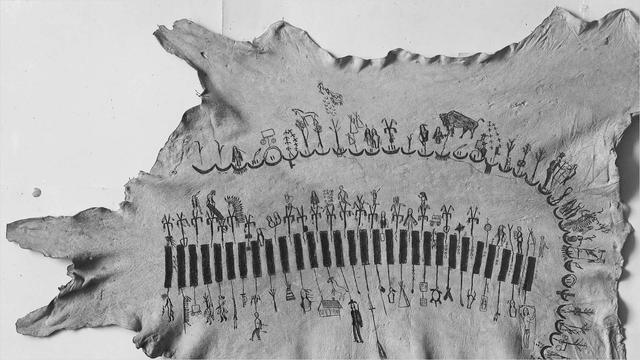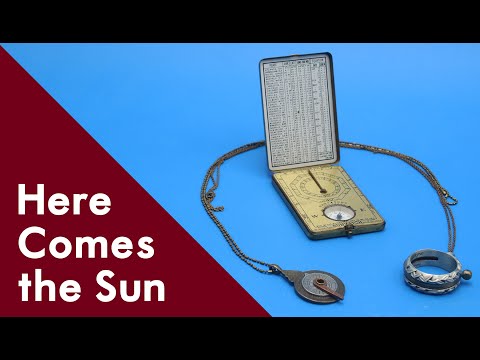Recent searches
Search options
#timekeeping
For those who celebrate, may your heart join nature in singing the joy of #spring this #vernalequinox.
Consider our #seasons with #Earth tilted ~23.4 deg, imagine seasons on #Uranus tilted ~82.2 deg.
#astronomy #planet #equinox #calendar #timekeeping
image by L. Sromovsky (U WI Madison) & Keck via APOD 2004
Still adjusting to #DaylightSavingTime?
During #WWII, UK used double summer time. Springing forward 2 hours (UTC+2), but only falling back 1 hour (UTC+1+.
Economic & health effects of #DST remain controversial.
#timekeeping #time #histsci
illustration courtesy geralt via Pixabay
Busy day at Stonehenge as the stones are moved forward one hour
Stonehenge is one of the world's most iconic prehistoric monuments, but did you know that parts of it have been moved in modern times? This fascinating image shows a moment from the 1950s restoration efforts, but with a humorous twist—it almost looks like the stones are being adjusted for daylight saving time! Of course, no one is actually resetting Stonehenge for daylight saving time—but this real historical photo from the 1950s restoration efforts makes it look that way! The Real […]
Homer (not Simpson), Hesiod, and Euripides describe the beginning of Winter as being when the Pleiades, the Hyades, and Orion set just before sunrise, at the same time as Greeks hear crane calls.
When they were writing, this would have happened around the halfway point between the southward equinox and the southern solstice, same as how the Celts and Chinese reckon the seasons.
For those who celebrate, laissez les bons temps rouler. #Lent is coming
#MardiGras & #AshWednesday are 41/40 days before #Easter (exclude Sundays), as determined by #fullmoon after #vernalequinox
Computes paschalis: calculates these dates.
#astronomy #timekeeping #calendar #histsci
Mempi Carnival invitation cover, Memphis Tennessee (public domain) via Wikimedia Commons
For those who celebrate, may discipline & devotion during this holy month bring peace & blessings. Ramadan Mubarak!
#Ramadan begins w/ 1st sighting of waxing crescent #moon. Purely lunar Islamic #calendar shifts w/ respect to civil (lunisolar) calendar & #seasons.
#astronomy #timekeeping
photograph of Fatima Masumeh Shrine, Qom, Iran by A. Pashaei (CC BY-SA 4.0) in 2020 via Wikimedia Commons
The Borana group people into age-based and generation-based groups, which are completely independent.
Every eight years, leadership passes to the next generation group in an endless cycle. Historians identify time not by years, which are a little vague in Borana philosophy, but by which generation group was in authority at the time.
Legesse literally wrote and entire book about this, which I got from Anna just for the calendar stuff.
Thank you for reading.
12/12
Today I want to talk about Borana timekeeping. This is hard to do without getting into anthropological controversies, and it's not every day I get to disprove a widely-repeated idea. (I am not the first to disprove it but I did it independently).
1/12
The issue here is that 28 days doesn't match up with any lunar cycles. The synodic month is a shade over 29½ days long, so any timekeeping system that synchronises with the phases of the moon will have months of 29 or 30 days.
The sidereal and draconic months are just over 27 days long; months that synchronise with those moon cycles will occasionally be 28 days long, but will more often have 27 days.
3/12
Polynesians kept time by the moon; each lunar month had a particular name and meaning corresponding to the season in which it fell, but there was no real concept of years until Europeans came along.
The Kiowa appear to have been the opposite. They kept pictorial records of history, with standard symbols to indicate summer and winter, and a picture to represent the most significant event of the season: https://kiowacalendars.org/calendars

How a Leap Second Became a Leap of Faith in Tech Timekeeping
In the world of precise timekeeping, leap seconds can cause chaos. Discover how one sysadmin ingeniously managed to slow down an entire company's infrastructure by a second to avoid the pitfalls of a ...
https://news.lavx.hu/article/how-a-leap-second-became-a-leap-of-faith-in-tech-timekeeping
How a Leap Second Became a Leap of Faith in Tech Timekeeping
In the world of precise timekeeping, leap seconds can cause chaos. Discover how one sysadmin ingeniously managed to slow down an entire company's infrastructure by a second to avoid the pitfalls of a ...
https://news.lavx.hu/article/how-a-leap-second-became-a-leap-of-faith-in-tech-timekeeping
It's the latest chapter in the long-running debate over whether to scrap the status quo, and over which permanent time would be better. #DaylightSavingTime #DST #Timekeeping #Legislation #Congress #IDontCareJustPickOne https://buff.ly/403Lv2e
Another super interesting paper by #BernieTaylor on #lunar #timekeeping and animal behaviour in #UpperPalaeolithic #rockart here
https://www.academia.edu/86645040/Lunar_Timekeeping_in_Upper_Paleolithic_Cave_Art





